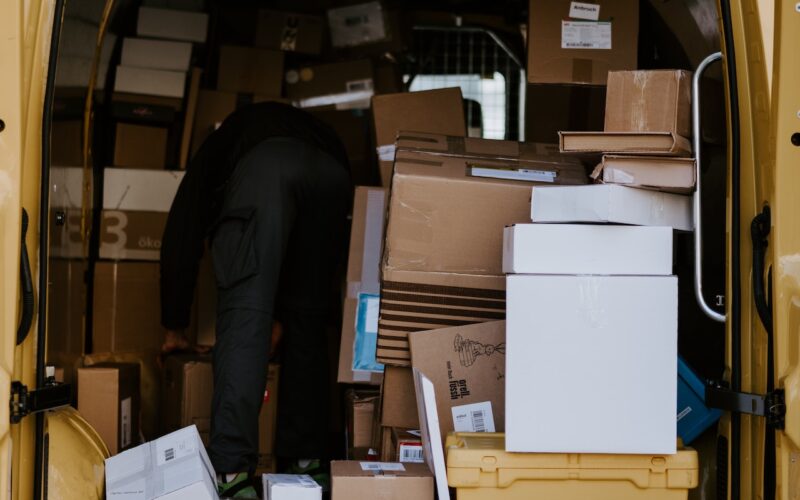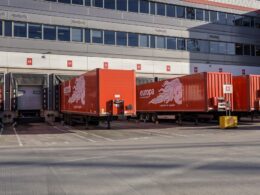It seems like we say this every year, but this past holiday season in the UK was particularly chaotic from a logistics perspective. Between the Royal Mail strike, the weather, and the usual challenges that go along with peak season order volumes and tight deadlines, logistics businesses had to navigate a perfect storm of high expectations, high demand, and a lack of available delivery resources. Alex Buckley, General Manager for EMEA & APAC at DispatchTrack discusses.
But now that the holiday season is over, logistics operators can put all those worries behind them, right? Not quite. As of the last week of the year, we’ve now entered the period when many retailers accept returns of Christmas gifts—and studies show that return volumes this year are 25% higher than the same period last year in spite of lower overall spending on gifts.
This puts logistics operators in a complex position. In order to keep customers happy in spite of disruptions, they need to leverage a part of the supply chain that has historically been overlooked by many businesses: efficient reverse logistics. Luckily, it is possible to manage these processes seamlessly if you have the right tools and tactics in place.
Ensure Total Visibility Before and After The Deliveries
Dealing with high volumes of goods coming back to warehouse and distribution centres starts long before the holiday delivery rush is underway. Specifically, it starts with effectively documenting each and every delivery run with a complete audit trail that you can refer back to as needed. This includes ensuring a clear record of which deliveries were made at what times, along with photographic proof of delivery that’s timestamped, geostamped, and accompanied by a customer signature. All of this information should be at your fingertips when you look at the history for a given order.
Why is this so important? Because it means you actually know who received which items at what time. This might not sound like much—but it can make all the difference when a customer needs to send something back. Rather than scrambling to associate a customer with their order and figure out exactly what happened on the day of delivery, you can immediately visualise the information you need and start from there. This way, you can also more effectively separate defective or damaged goods from goods that could theoretically be resold.
Automate Return Scheduling to Maximise Capacity
Depending on what types of deliveries you’re managing, returns from customers might be as simple as printing out a shipping label—or they might require a lorry or van to come back to the delivery site to haul away a large piece of furniture, an exercise machine, or any other sort of big and bulky item. While the first scenario can certainly present challenges (making space in your warehouse or distribution centre for the returning items, e.g.), the second is often the most logistically complex. Ideally, you’ll be able to incorporate a certain number of returns into your regular routes (e.g. towards the end of the day when a lorry or van might be running mostly empty), but figuring out a way to optimise those stops within your current process is more mathematically complicated than a human planner can realistically grapple with.
That means that in order to handle this process efficiently, you need the ability to optimise routes with the push of a button—as well as the flexibility to incorporate pickup stops into your route planning process without losing out on efficiency or adding too much complexity. Here, you obviously want to maximise your capacity utilisation without adding unnecessary extra trips, which probably means finding a way to leverage AI or machine learning to suggest the most cost-effective options.
Communicate Clearly with Customers
At the end of the day, efficient returns management isn’t just about keeping costs down—it’s about offering customers a great experience even when things haven’t gone according to plan. That’s why one of the most important parts of handling returns during this time of the year is ensuring customer communications that uplift your brand and keep customers in the loop.
This might start with delivery surveys to see how you did, plus personalised follow ups for the ones that didn’t meet the mark. Those will be some of the most likely culprits for returns, so you can use that as the foundation to ensure that your customers have the information they need about how to process their return request and what to expect throughout the process, If you’re arranging a pickup from their home, you can approach it much the same way you would approach a last mile delivery: let customers know when to expect the pickup team and send ETA notifications and updates along the way. In this way, you can minimise customer frustration and provide a solid customer experience.
After the delivery pandemonium that typically comes around the holidays, it can be easy to overlook the importance of getting the post-holiday processes right. But, ultimately, how you handle returns says a lot about both your brand and your logistics capabilities. That’s why following the right best practices is so crucial.
by Alex Buckley, General Manager for EMEA & APAC at DispatchTrack.













